Where in Savannah Can I Find Winter Pictures With Snow
How great artists depict winter in 10 sublime paintings
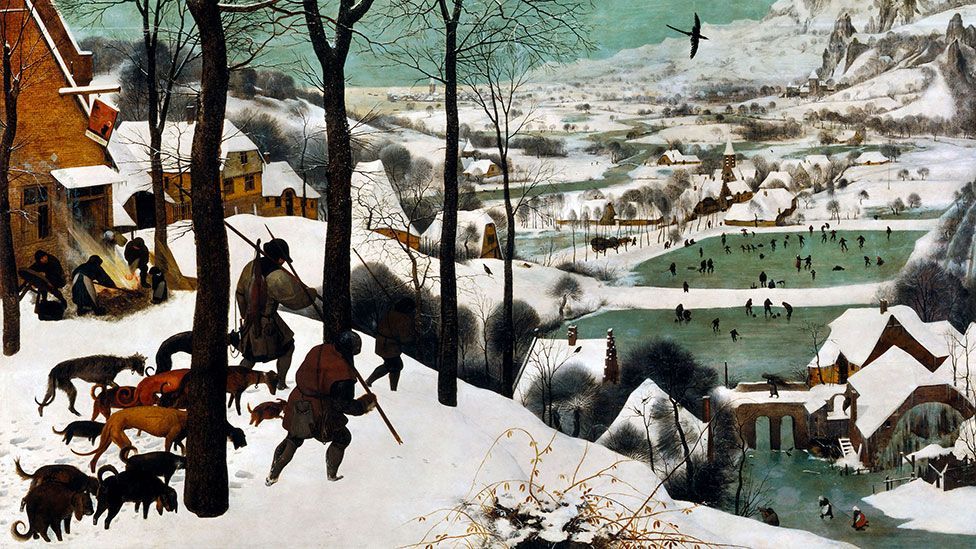
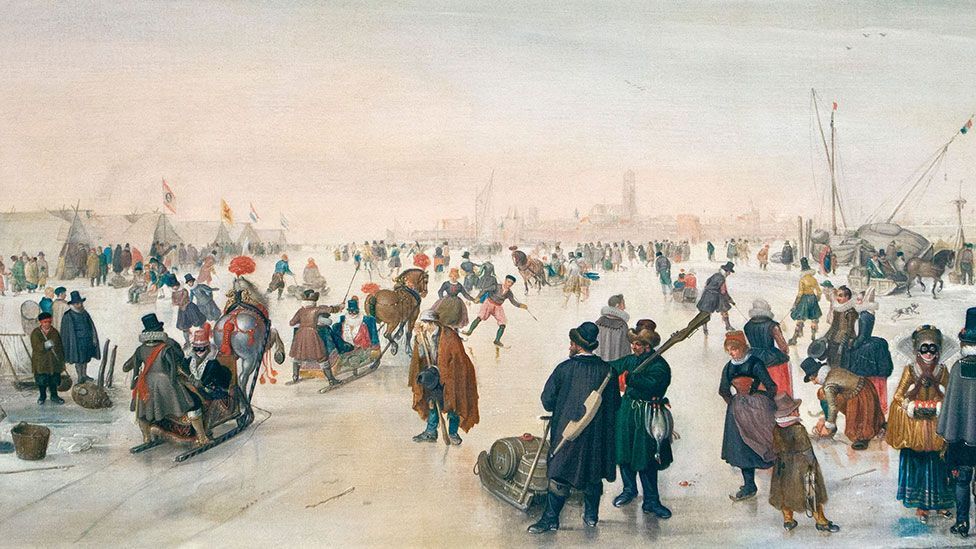
He's not A celebrated every bit Rembrandt or Vermeer, but no painter of the Dutch Gilded Historic period – which corresponded with unmatched of the coldest periods of the last millennium – depicted the frozen Low Countries with the frequency and predisposition of Avercamp. Born deaf and mute, helium learned to skate as a nestling and became a specialist in winter scenes, which collectors bought as paintings and prints. Like most of his winter landscapes, this unmatched makes colorful use of one-point position: in the foreground we see old-time skaters and disguised revellers on buck-drawn sleighs, while other sliders, some adept and some less so, extend out to the horizon.

Winter scenes, technically more hard than summertime ones, were relatively rare in western art until the earlyish Renaissance. One of six panels representing the seasons (though only five live), Bruegel's immensely detailed masterpiece Marks a major shift from symbolical representation of the seasons, the previous Continent tradition, to an alone secular scene. It is a hunky-dory wintertime day, and townsfolk are skating and playing hockey, but the hunt has not gone well. The hounds calculate exhausted, and the hunters have just a single fox among them.
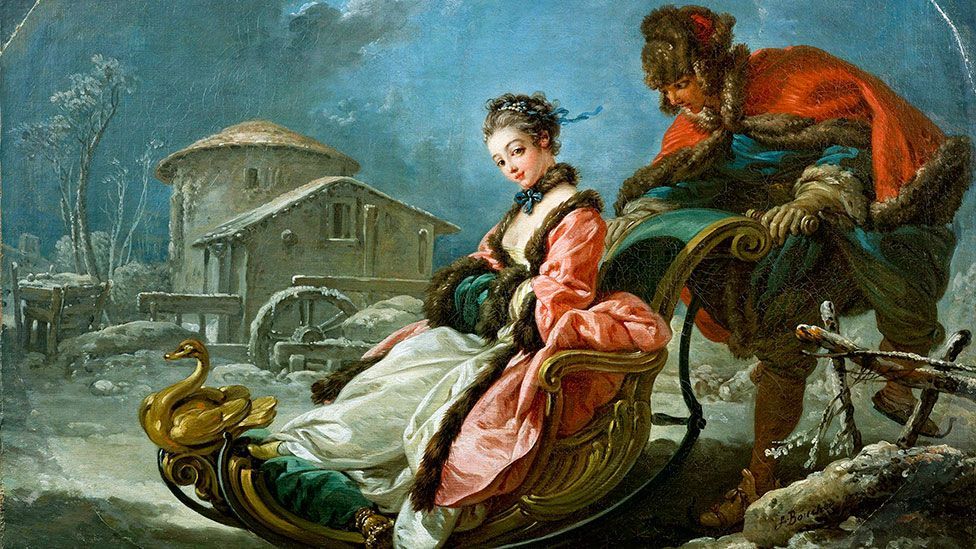
This allegory of the cold months typifies the Rococo style of the 18th Century: rather of depicting nature OR even rural labour, Boucher gives U.S. a flirty duo sliding along in a golden sledge. (The female work out's outfit, scorn the fur, is by all odds not weather-appropriate.) The picture was executed for Madame de Pompadour, Louis XV's official mistress, and its unorthodox shape suggests that it probably hung higher up a door in one of her many residences.
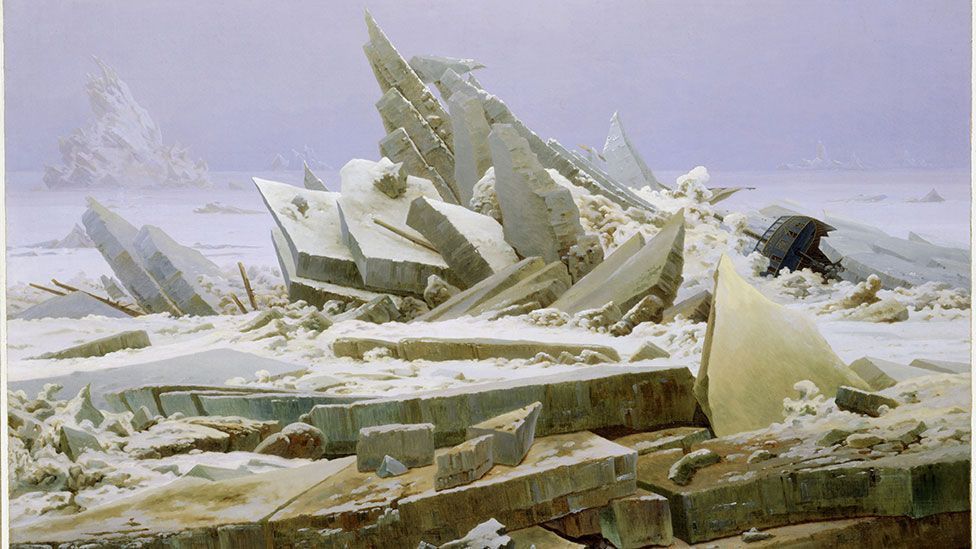
German picture's great romantic, Friedrich hither depicts the shipwreck of the HMS Griper, a British vessel on an expedition northwards Pole. The berg totally dwarfs the ship; it is a tombstone as very much like an obstacle. As so often in Friedrich's art, nature present is like a sho sublimely beautiful and completely indifferent to frail life sentence.
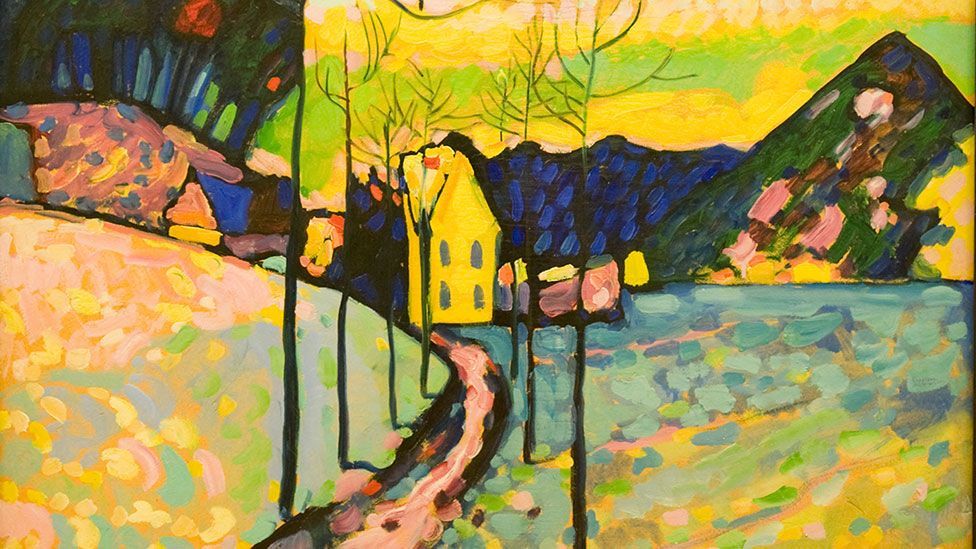
Early in his life history Kandinsky developed a theory of colors that ascribed synesthetic, nearly mystical powers to certain combinations of tones. In this word-painting of a pull the wool over someone's eyes-blanketed country landscape painting, one of his last tropical compositions before turning entirely to abstraction, the white-livered sky hums with effects of green and hot, the path to the small house in the centre glows pink, and the hillside is a riot of makeshift coloured daubs.
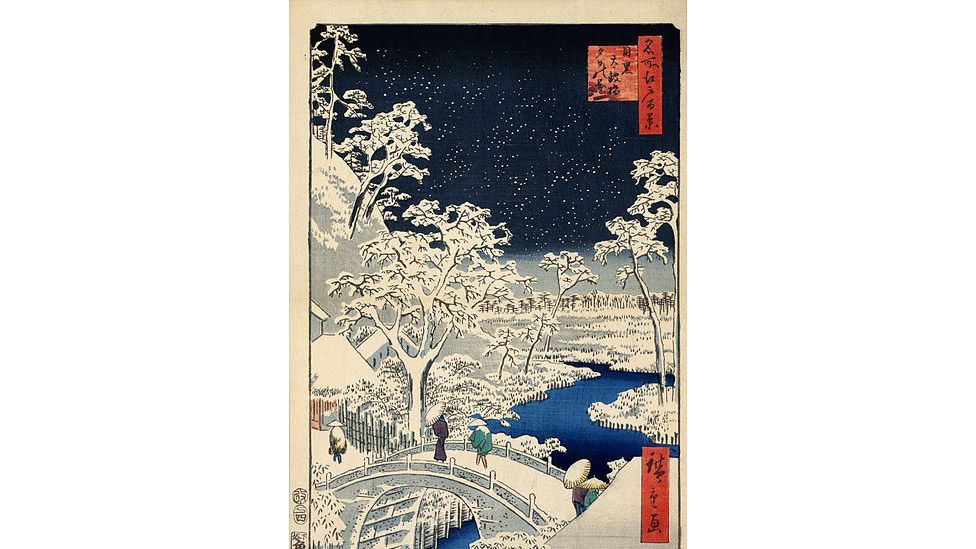
One of the images from One Hundred Views of Edo, his wildly pop series of ukiyo-e prints, this image depicts a rare stone bridge deck in the city we now call Tokyo. Captured at an oblique angle, the bridge seems dwarfed under the snow-occupied flip, and the passersby, shrouded under bamboo hats, get lost in the landscape. Hiroshige's winter scenes are perhaps his most sensitive; under snow, even the big city feels impermanent.
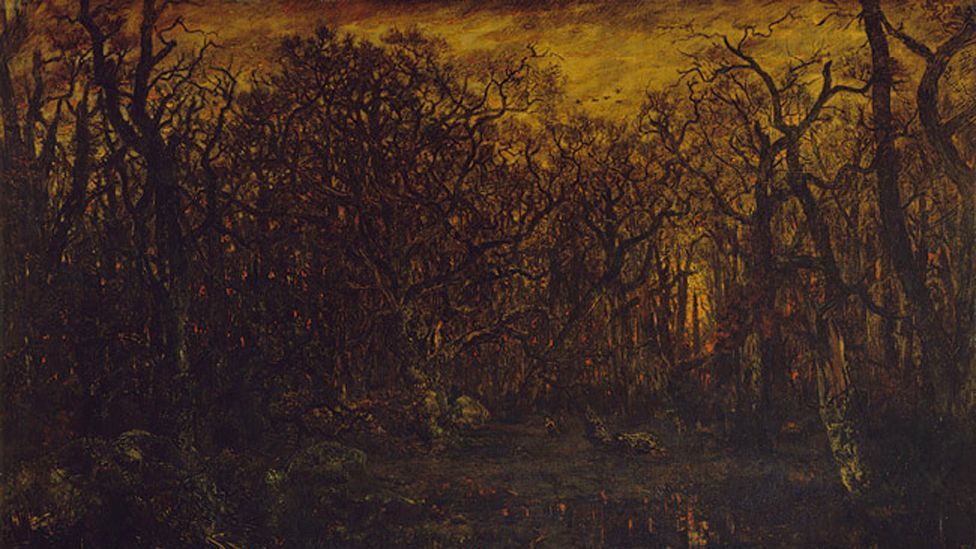
After endless rejections at the City of Light Salon, Rousseau became one of the leading figures of the Barbizon school, a collection of mid 19th Centred painters World Health Organization depicted the forest of Fontainebleau. There he invested landscape painting with an ecological responsibility. This massive painting, roughhewn at his death, is less concerned with the exact appearance of the bare oaks of the forest than with our place in nature, and the emotions that nature inspires.
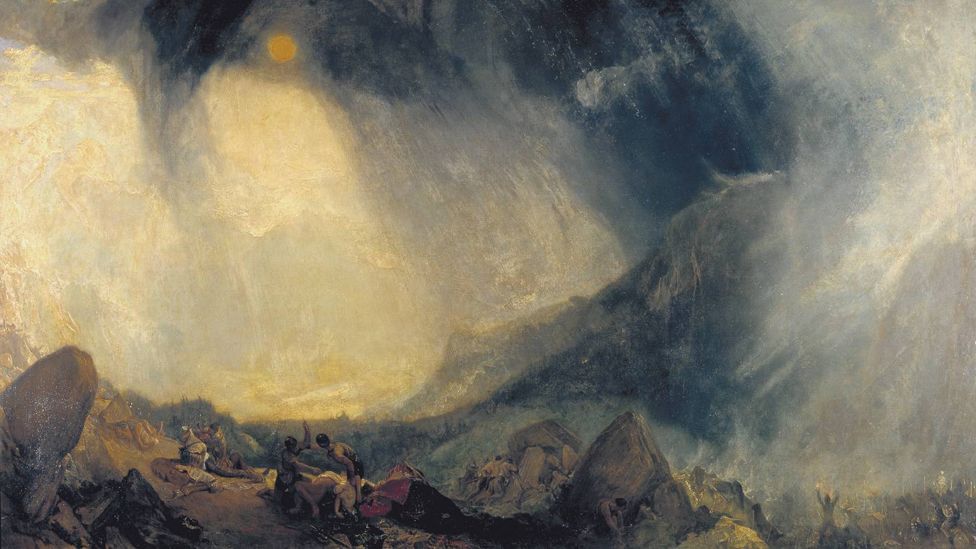
The City state general is nowhere to be seen in this churning, nightmarish depiction of bedraggled invaders attacked by local forces in Val d'Aosta and troubled by an awesome, just about disaster storm. The giant, wavelike black cloud and the avalanche on the Alp at right express Turner's vision of rarefied nature, but this painting, realised when Napoleon Bonaparte was invading the same region, was also a political affirmation.
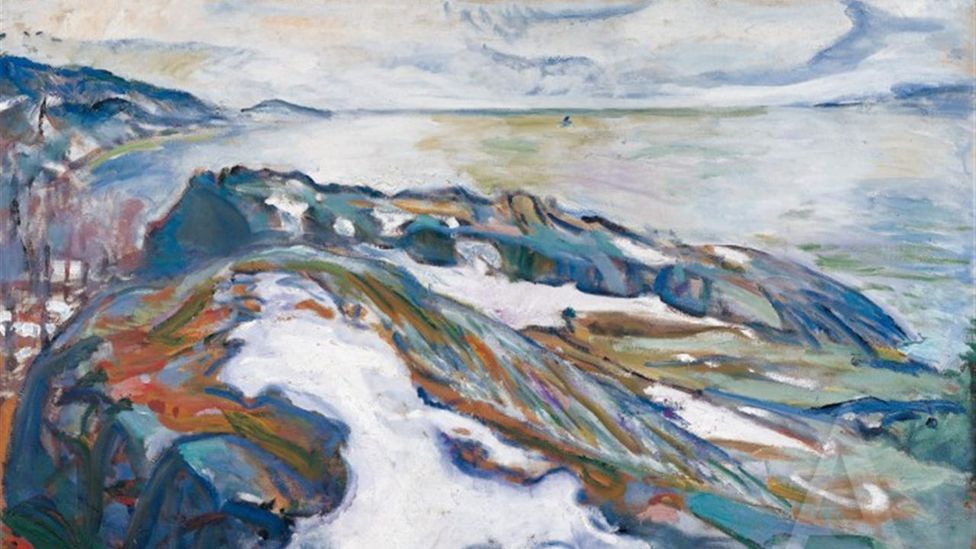
Painted in the profundity of the Norwegian winter, Munch's placid snowscape is less Angst-ridden than his much famous images of vampires or screamers. Yet the out of the blue colourful ridges of the C-covered mountains – rivulets of green, blue, and pink – make flush this relatively quiet image hum with the emotion and excitement that characterise his best work.
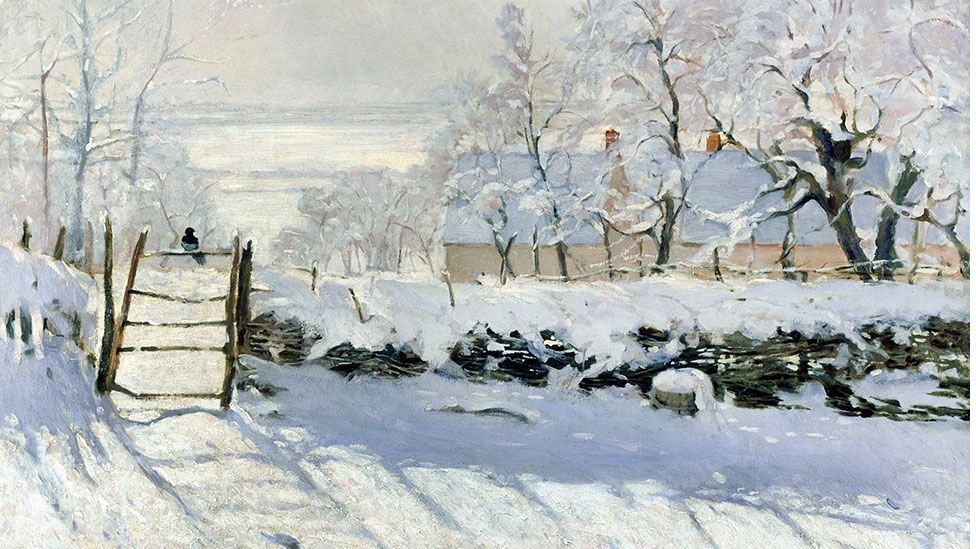
Monet was a master key of the winter scene – he painted more than 100 of them, and when Edouard Manet saw the Impressionist's snowscapes he abandoned any endeavor to make his own. This is Monet's largest wintertime painting, depicting a single black bird on a palisade in Etretat – but what's nearly thrilling about the work is the shadows on the snow, done not in black but in a convention-sensational blue.
Where in Savannah Can I Find Winter Pictures With Snow
Source: https://www.bbc.com/culture/article/20131224-the-10-greatest-winter-paintings
0 Response to "Where in Savannah Can I Find Winter Pictures With Snow"
Post a Comment